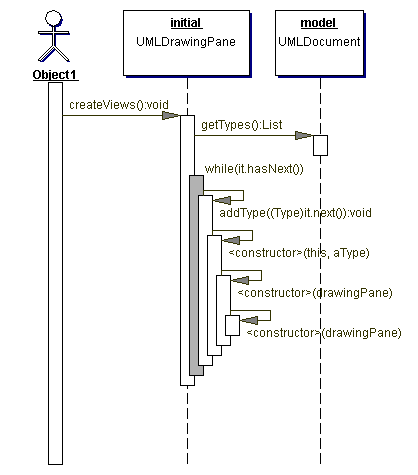
There are 3 types of Interaction diagrams Sequence diagrams, communication diagrams, and timing diagrams.
#DRAW SEQUENCE DIAGRAM HOW TO#
This sequence diagram example shows how hotel reservations can be made. This sequence diagram tutorial is to help you understand sequence diagrams better to explain everything you need to know, from how to draw a sequence diagram to the common mistakes you should avoid when drawing one. MVC Sequence Diagram Example: Hotel Reservation Fragment The model object encapsulates the fine-grained business logic and data. A controller object implements the logic for the allowable transactions that can be performed on the model. a dialog box is a good example of a view. In the generic MVC sequence diagram below, it shows the view object is responsible for user input and output, i.e. Popular programming languages like JavaScript, Python, Ruby, PHP, Java, and C # have MVC frameworks that are used in web application development straight out of the box. These can help to predict how a system will behave and to discover responsibilities a class may need to have in the process. A sequence diagram is a good way to visualize and validate various runtime scenarios. Traditionally used for desktop graphical user interfaces (GUIs), this pattern has become popular for designing web applications. Sequence diagrams describe interactions among classes in terms of an exchange of messages over time.
#DRAW SEQUENCE DIAGRAM SOFTWARE#
MVC Framework has been widely used by many software developers and other software frameworks and libraries.

The model (core functionality and data).The most important separation is between presentation and application logic. In MVC, the presentation layer is split into controller and view. MVC Framework is common to think of an application as having three main layers: presentation (UI), application logic, and resource management.

Since the programming language Smalltalk first defined the MVC concept in the 1970s. MVC (or Model-view-controller) is a popular software framework for successfully and efficiently relating the user interface to underlying data models.


 0 kommentar(er)
0 kommentar(er)
